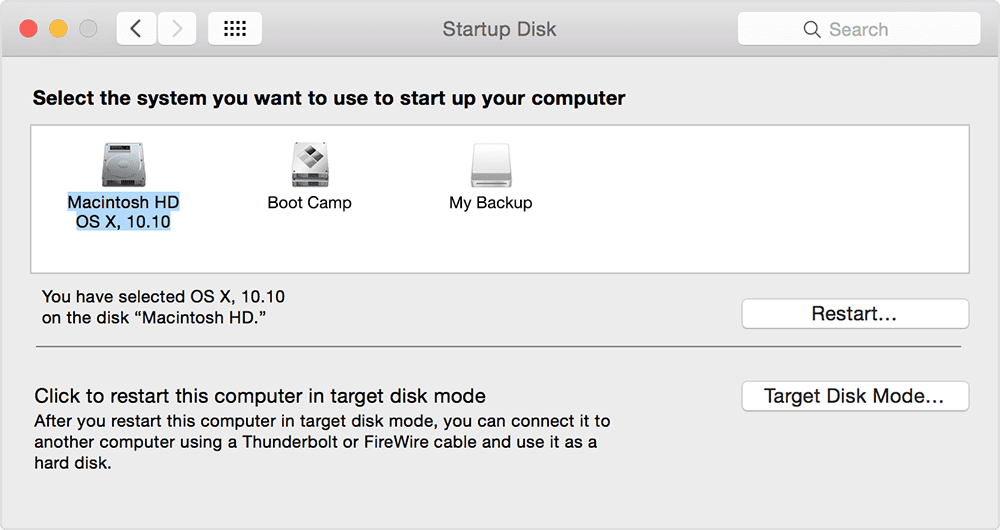Macs can be set to start up from a different disk like an external drive, network volume, or a USB flash drive.
The process for configuring a new startup disk on Macs with Apple silicon and older Intel-based Macs is different.
If you have a Mac with an Apple T2 Security Chip, you may need to set additional security features via the Startup Security Utility in order to change the startup disk.
To learn more about the Startup Security Utility read ‘What is Startup Security Utility on a Mac‘.

How to Change the Startup Disk on macOS
The Startup Disk settings on Apple’s macOS are different for computers that use different processors, i.e., Intel and Apple Silicon.
Here are the two methods explained one by one.
On Apple Silicon Macs:
- Shut down your Mac: Click the Apple symbol () in the menu bar and select Shut Down…, then confirm in the dialog prompt.
- Press and hold down the power button until “Loading startup options” appears on the screen. (If you’re using a Mac mini, wait for the system indicator light to turn amber.)
- When you see the available startup volumes, select one, then click the Continue button.

On Intel-based Macs:
- Shut down your Mac: Click the Apple symbol () in the menu bar and select Shut Down…, then confirm at the prompt.
- Press and hold the Option key as you press the power button to start up your Mac.
- When you see the available startup disks, select one, then click the Up arrow.
To set a default startup disk, follow these steps:
- On your Mac, click the Apple symbol () in the menu bar and select System Settings….
- Click General in the sidebar.
- Select Startup Disk on the right.
- Click the icon of the disk you want to use.
- Enter your admin password or use Touch ID to confirm the change if required.
- Click Restart….
When selecting a network startup volume, it’s important to take note of one thing.
A standard network volume icon appears as a globe with a folder. Conversely, a network install icon appears as a globe with a downward-pointing green arrow.
Selecting a ‘network install image‘ reinstalls your system software and may erase the contents of your disk. To avoid such a scenario, make sure to select a standard network volume icon.
Conclusion
I hope you learnt that changing your Mac’s startup disk is a simple process. It can be done for either the next startup only or for every startup going forward.
The process is different for Macs with Apple silicon and older Intel-based Macs, so make sure to follow the steps that apply to you.
If you have a Mac with an Apple T2 Security Chip, you may need to set additional security features via the Startup Security Utility in order to change the startup disk.
Remember to select a standard network volume icon to avoid erasing the contents of your disk when selecting a network startup volume.










